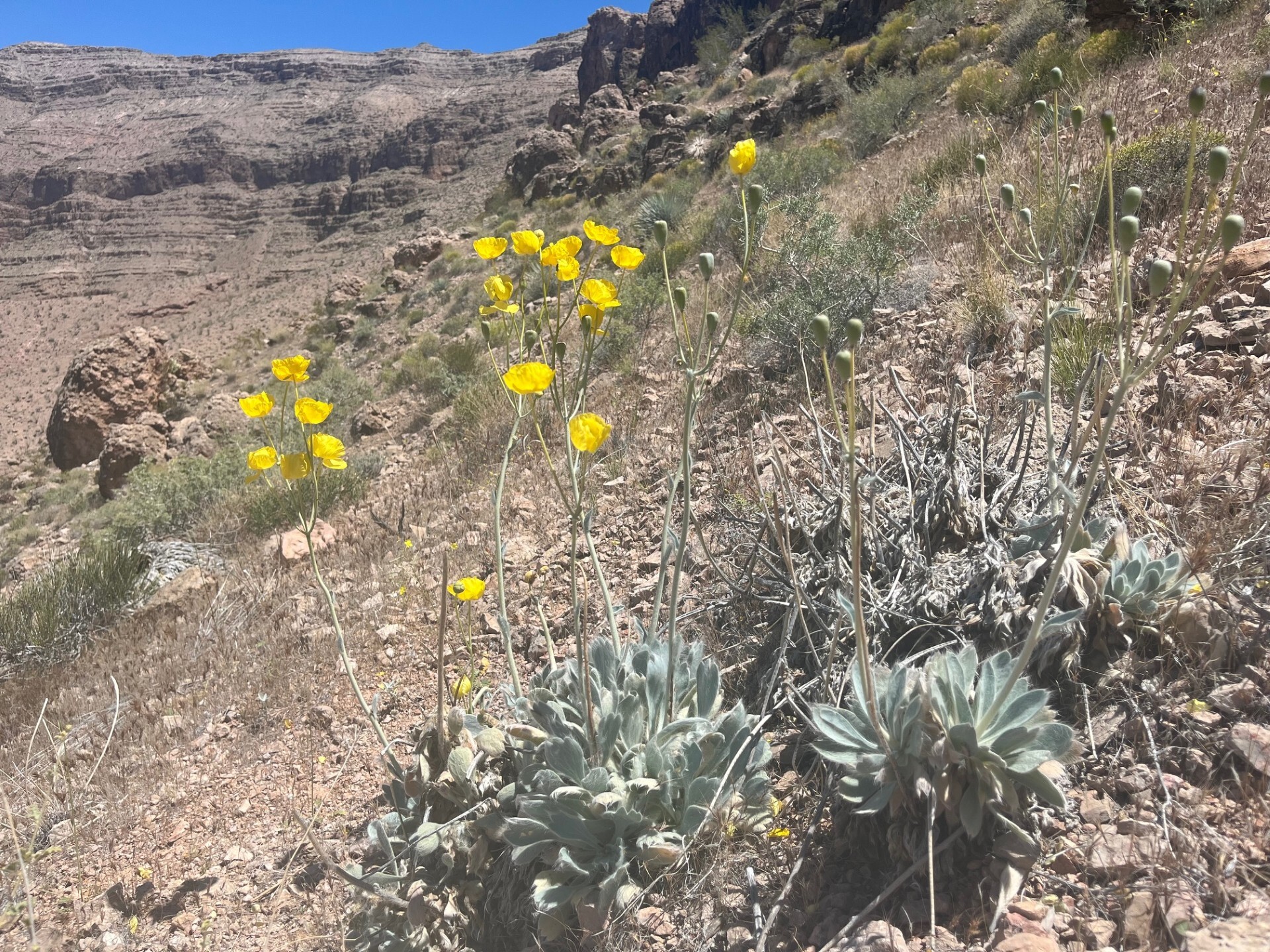Earth Notes
Earth Notes, KNAU’s weekly environmental series, explores the Colorado Plateau by telling stories of the intricate relationships between environmental issues and our daily lives. Rooted in science and wrapped in human interest, the two-minute-long segments encourage listeners to think of themselves as part of the solution to environmental problems.
Earth Notes: Lagged Lookout Trees
There were no fire lookout towers in the Arizona of the early 1900s. Instead, early firefighters found tall ponderosa pines near mountain tops or other strategic viewpoints.
Earth Notes: Four Corners Potato
The Four Corners potato fed people 10,000 years ago and now the ancient, nutrient-packed spud is drawing new interest.
Earth Notes: Sandstone Voices
The sandstone pinnacles, arches and natural bridges of the Colorado Plateau may seem like static, silent parts of the landscape. But researchers at the University of Utah have tuned in to a very different reality.
Earth Notes: Jeweled Trees
No one expects to see trees that look like jewels in the high desert of Arizona. But that’s exactly what visitors find in the Petrified Forest National Park – ancient logs preserved for millennia by a process that transfigured them into rare and beautiful stones.
Earth Notes: Saguaros and their nurse plants
The mighty saguaro cactus is both a cultural and ecological icon.
Earth Notes: The Feather Atlas
If you find a bird feather – how can you tell which species it belongs to? An ornithologist in the Forensic Laboratory at the U.S. Fish and Wildlife Service pondered this question.
Earth Notes: PikaNet
The American pika is a small mammal that inhabits the highest elevations in the western mountains. Members of the rabbit family, pikas are approximately 7 inches long, characterized by outsized ears, short legs and a chunky, furry body.
Earth Notes: Monsoon Science, Summers of the Future
CO₂ levels topped a record high of 430 ppm in May. It’s bad news for ecosystems, but could mean wetter summers for some regions.
Earth Notes: Monsoon Science, Seeding the Rain
Rain comes when water molecules in the atmosphere clump together to form ice crystals or water droplets that are heavy enough to fall to the ground. But what causes that clumping to happen?
Earth Note: Monsoon Science, The Winter-Summer Dance
Monsoon season is underway. Meteorologists have identified a pattern that brings hope to those longing for a lush summer this year.
Earth Notes: Las Vegas Bearpoppy

The Las Vegas bearpoppy is incredibly rare and found in scattered locations in northwestern Arizona and near Las Vegas.
Earth Notes: Wet Meadow Restoration
Wet meadows are small but crucial landscape elements among the pines above the Mogollon Rim. They benefit plant diversity, wildlife and watershed health.
Earth Notes: Indian Ricegrass
Across the vast landscapes of the Colorado Plateau, one resilient plant has profoundly shaped people and land for many centuries: Indian ricegrass.
Earth Notes: Apex Archaeology Project

Loggers worked nonstop during the Great Depression. One of the longest-standing logging communities was a place called Apex along the Grand Canyon Railway, north of Williams and near the Canyon’s South Rim.
Earth Notes: Kaibab Pincushion Cactus

A cactus no bigger than a paperclip grows across the rocky eastern slopes of the Kaibab Plateau. Its thin, long spines protrude from its rotund body like a plump hedgehog.
Earth Notes: Suckley’s Cuckoo Bumble Bee
The Suckley’s cuckoo bumble bee has a unique life cycle. Like cuckoo birds, they lay their eggs in the nests of other species instead of rearing their own young.
Earth Notes: Monarchs, Milkweed and Interns
Monarch Butterflies fly thousands of miles every year between their southern overwintering grounds as far north as Canada and back.
Earth Notes: Saline Lakes
The vast Great Basin stretches west from the Colorado Plateau across much of Utah and Nevada. The region is so named because bodies of water drain inland with no outlet to the sea.
Earth Notes: International Dark Sky Week
It’s International Dark Sky Week, a worldwide celebration that was started in 2003 to raise awareness about light pollution. This year is the first time it’s come to Flagstaff.
Earth Notes: The Lost City

Pueblo Grande de Nevada — known as the "Lost City" — is an archeological site near Overton, Nevada. It’s a complex of villages inhabited by the Ancestral Puebloans for nearly a thousand years.
Earth Notes: AI and Forestry
Artificial Intelligence is being applied to many areas of life, including forestry on the Colorado Plateau. A team at NAU is using AI models in conjunction with Light Detection and Ranging (LIDAR) technology.
